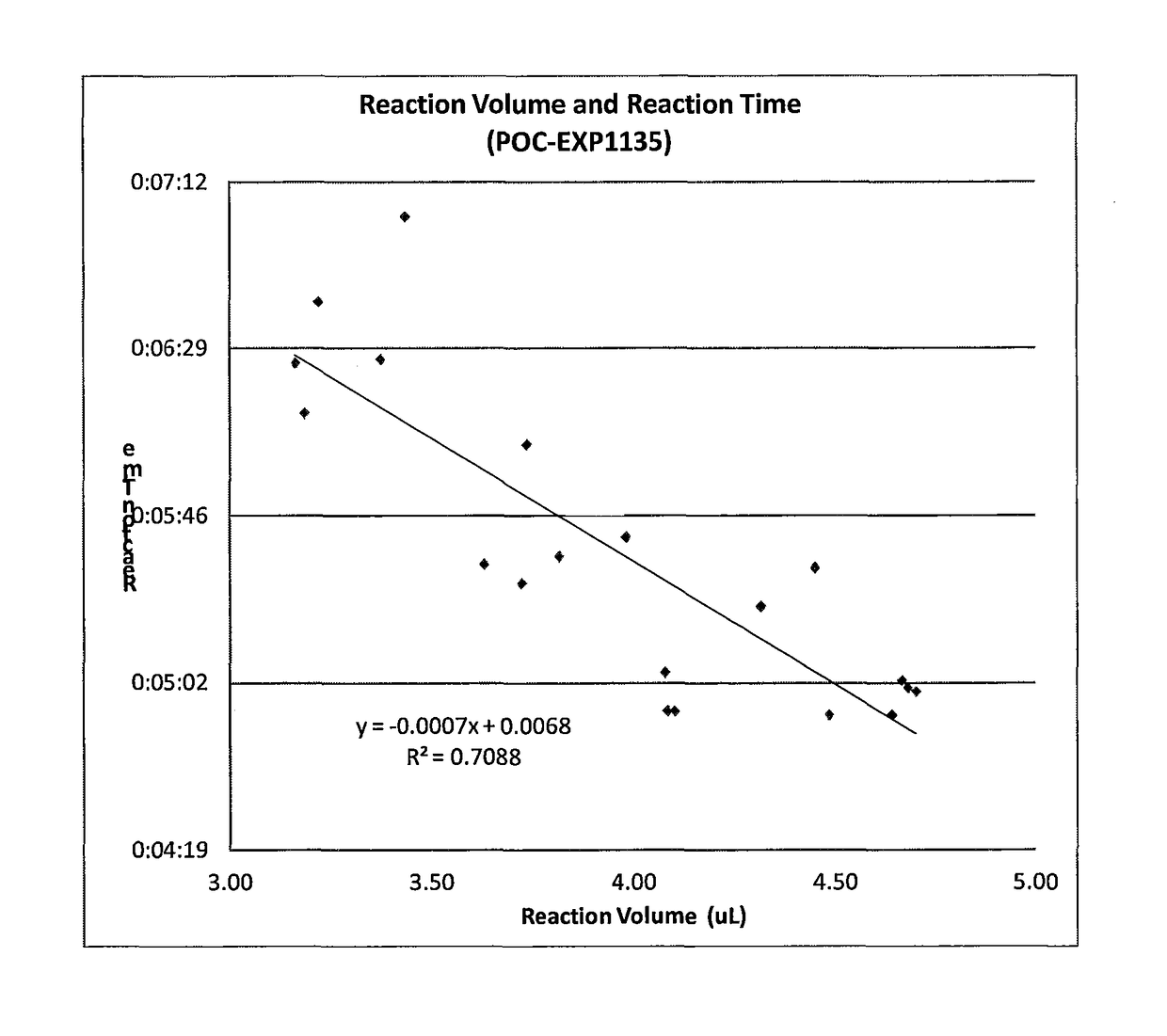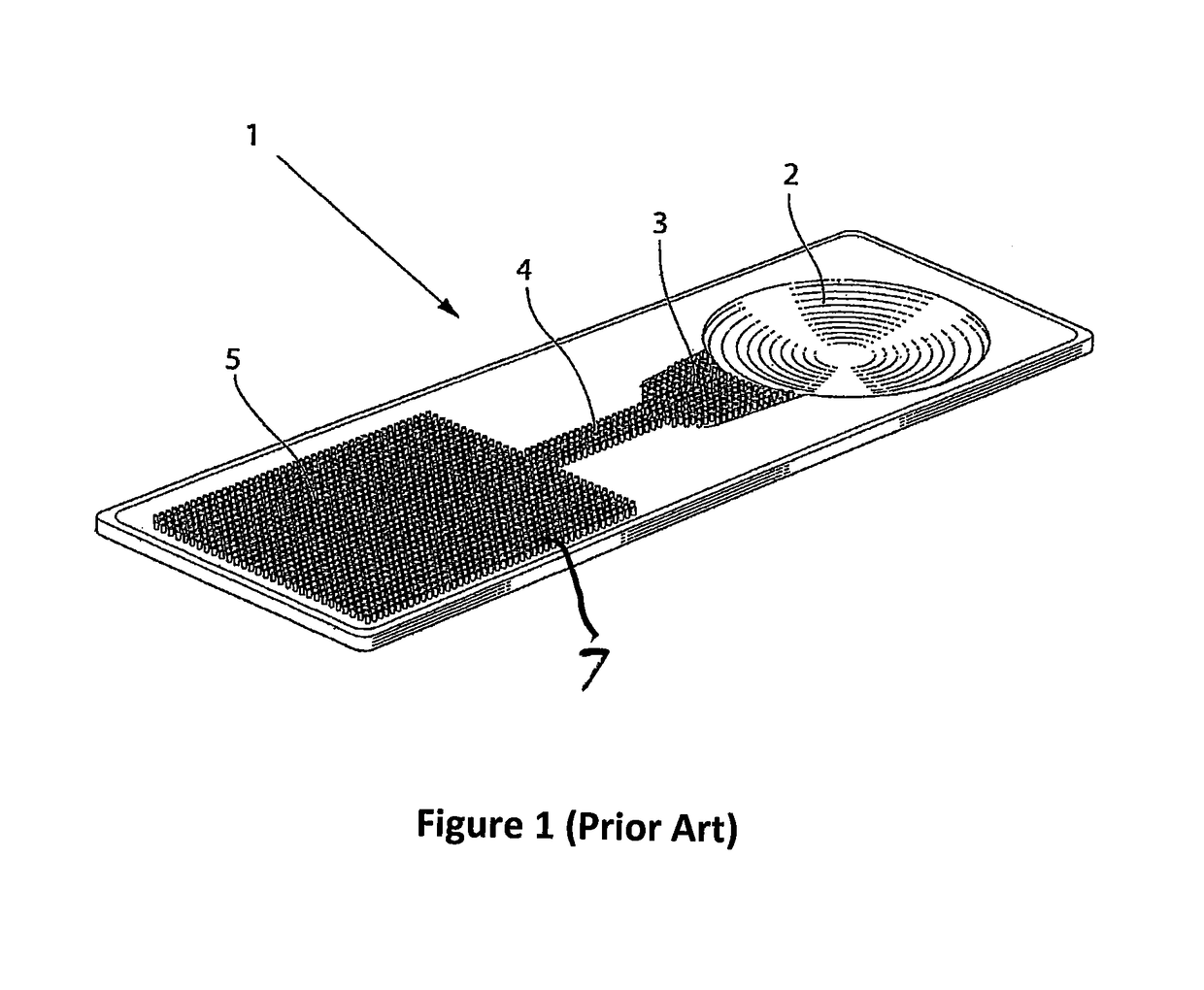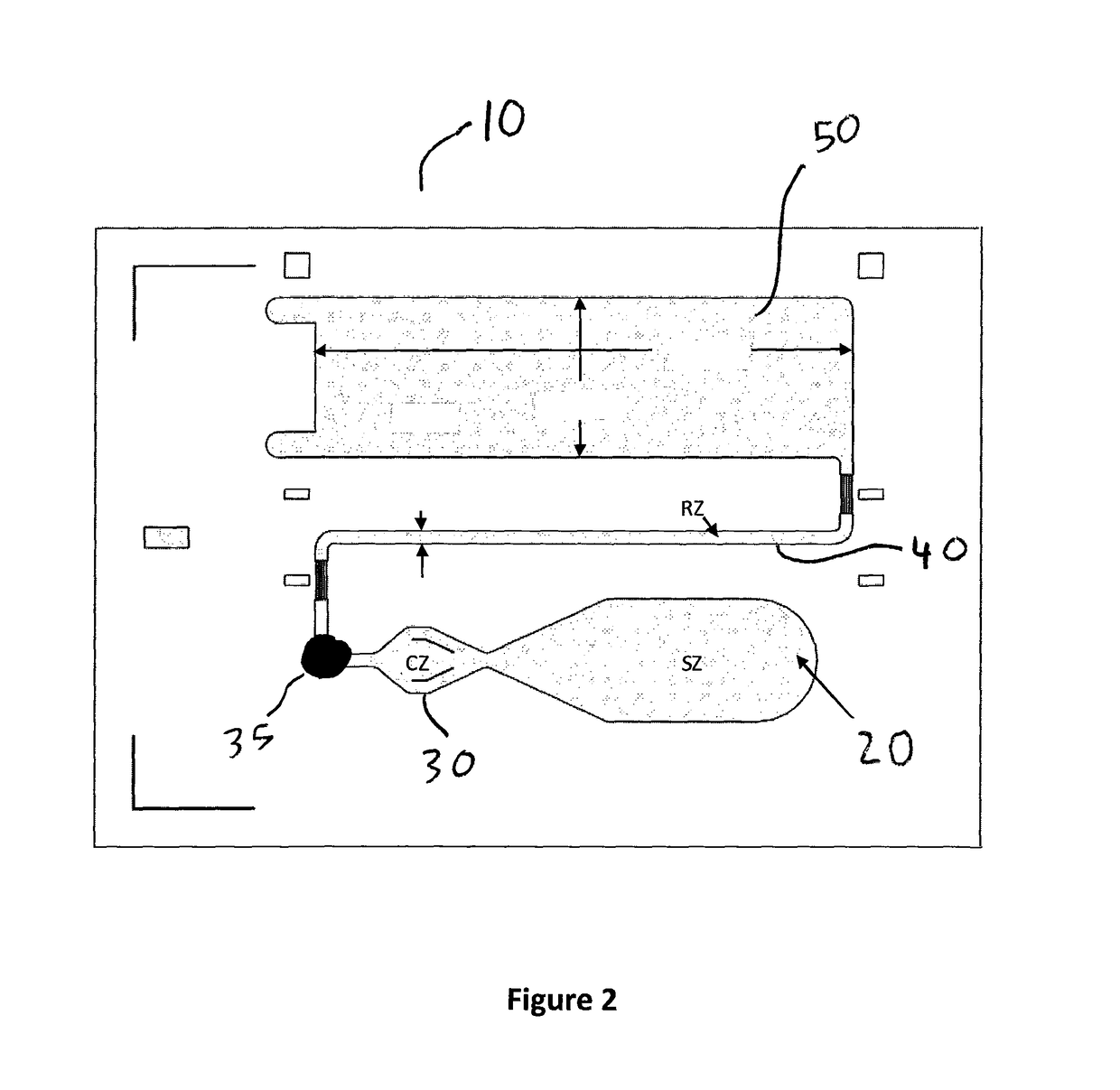Calibrating assays using reaction time
a technology of reaction time and assay, which is applied in the field of diagnostic assays, can solve the problems of many assays being limited by their speed, the measurement signal of a sample being assayed will not accurately correlate to the true concentration of analyte in the sample, and it is difficult to meet all these requirements in one and the same assay
- Summary
- Abstract
- Description
- Claims
- Application Information
AI Technical Summary
Benefits of technology
Problems solved by technology
Method used
Image
Examples
example 1
[0110]Plastic substrate chips made of Zeonor (Zeon, Japan) having oxidized dextran on the surface for covalently immobilization of proteins via Schiff base coupling were used. Fluorescently labeled Anti-NT-proBNP monoclonal antibody was deposited and dried to create a reagent zone. Anti-NT-proBNP monoclonal antibody was deposited and dried to create a detection zone. A small amount of Triton X-45 was deposited on the device to increase wettability of the sample for better capillary flow. Sample having the concentration of sample set out in Table 1 below was added to the sample zone of the device and the capillary action of the micropillar array distributed the sample through the flow channel into the wicking zone. To provide different reaction times, different chip designs (A and B) were used that provided the two reaction times shown in Table 1 and in FIGS. 10A and 10B. The signal intensities from the fluorescently labeled complexes in the detection zone were recorded in a prototyp...
example 2
[0113]Assay devices were prepared in a similar manner as Example 1, all using the same chip design. Two sets of samples having differing viscosities but the same concentration of NT-proBNP were prepared. The samples in Table 2 had 43.3 pg / mL of analyte. The samples in Table 3 had 750 pg / mL of NT-proBNP.
[0114]
TABLE 2Predicted ConcConcentrationCD TimePredicted ConcRate offrom Rate ofViscosity(pg / mL)Total TimeWick Time(Min)Signalfrom SignalSignalSignal1.4243.36.735.253.550.2824.610.08043.292.4343.313.0010.424.930.4038.440.08043.523.7143.327.1322.308.020.6367.650.07942.66mean0.4443.560.08043.15SD0.1821.970.0010.44cv %40.8%50.4%0.8%1.0%
[0115]
TABLE 3Predicted ConcConcentrationCD TimePredicted ConcRate offrom Rate ofViscosity(pg / mL)Total TimeWick Time(Min)Signalfrom SignalSignalSignal1.547506.655.233.724.32522.881.16764.852.3275012.439.875.226.32769.481.21797.353.6675026.4321.827.707.95971.471.03678.67mean6.20754.611.14746.96SD1.82224.660.0961.33cv %29.4%29.8%8.1%8.2%
[0116]As Tables 2 and ...
example 3
[0118]Plastic substrate chips made of Zeonor (Zeon, Japan) having oxidized dextran on the surface for covalently immobilization of proteins via Schiff base coupling were used. Two detection zones were provided to multiplex NT-proBNP and Risperidone were provided Fluorescently labeled Anti-NT-proBNP monoclonal antibody was deposited and dried to create a reagent zone. Anti-NT-proBNP monoclonal antibody was deposited and dried to create a detection zone. Fluorescently labeled BSA with covalently attached risperidone was deposited and dried to create a reagent zone. Anti-risperidone monoclonal antibody was deposited and dried to create a second detection zone. A small amount of Triton X-45 was deposited on the device to increase wettability of the sample for better capillary flow. Sample having the concentration of sample set out in Table 4 below was added to the sample zone of the device and the capillary action of the micropillar array distributed the sample through the flow channel ...
PUM
| Property | Measurement | Unit |
|---|---|---|
| diameter | aaaaa | aaaaa |
| diameter | aaaaa | aaaaa |
| diameter | aaaaa | aaaaa |
Abstract
Description
Claims
Application Information
 Login to View More
Login to View More - R&D
- Intellectual Property
- Life Sciences
- Materials
- Tech Scout
- Unparalleled Data Quality
- Higher Quality Content
- 60% Fewer Hallucinations
Browse by: Latest US Patents, China's latest patents, Technical Efficacy Thesaurus, Application Domain, Technology Topic, Popular Technical Reports.
© 2025 PatSnap. All rights reserved.Legal|Privacy policy|Modern Slavery Act Transparency Statement|Sitemap|About US| Contact US: help@patsnap.com



